#BreakingSyria: Reconstruction Starts with Statues in Deir ez-Zor
Regime rebuilding begins with statues, as opposed to infrastructure, in Syria’s east
#BreakingSyria: Reconstruction Starts with Statues in Deir ez-Zor
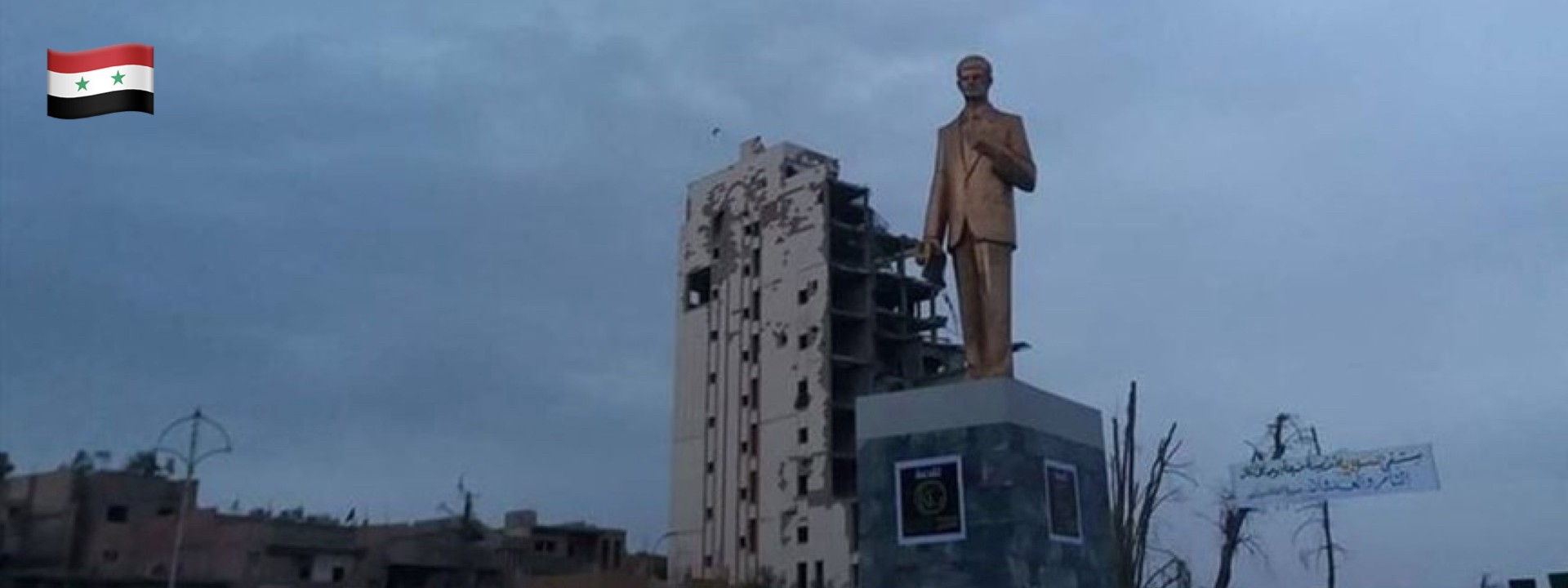
BANNER: (Source: Aljadeed)
Reconstruction in eastern Syria’s war-ravaged Deir ez-Zor (Deir Al-Zour, Deir ez-Zur) has begun, starting with the reinstallation of a statue of former Syrian President Hafez al-Assad, father of Bashar al-Assad.
The Syrian Arab Army (SAA) regained complete control of the town of Deir ez-Zor on November 3, 2017, as part of the military campaign in the eponymous province. The town, along with the entire region’s infrastructure, was devastated as the Assad regime fought to reclaim it from ISIS. Since then, the local inhabitants have struggled to rebuild destroyed houses and had challenges with access to clean drinking water.
In late October, a few images surfaced on social media of the first completed reconstruction in Deir ez-Zor. Instead of focusing on the town’s critical infrastructure, the Assad regime reinstalled the statue of the former Syrian President.
Assad’s Statue
When the Syrian conflict ignited in March 2011, crowds in many towns all over Syria began showing signs of disobedience toward the Assad regime. The official flags of Syria were replaced with those of the opposition, meanwhile the statues symbolizing the regime were taken down. After the statue of Bassel al-Assad, the brother of Bashar al-Assad, was destroyed in Deir ez-Zor in April 2011, the government took action. In order to prevent the same fate for the Hafez al-Assad statue, the government took the statue down in July 2011 and kept it in storage. More statues of the Assad regime were torn down during the conflict, including Hafez Al-Assad’s statue in Raqqa in 2013.
On October 25, 2018, online Arabic-language media agency SMART News published a news brief with a picture proving that a statue of Hafez Al-Assad was reinstalled in Deir ez-Zor. More photos, published by other media outlets and Twitter users, appeared on October 24, 2018.
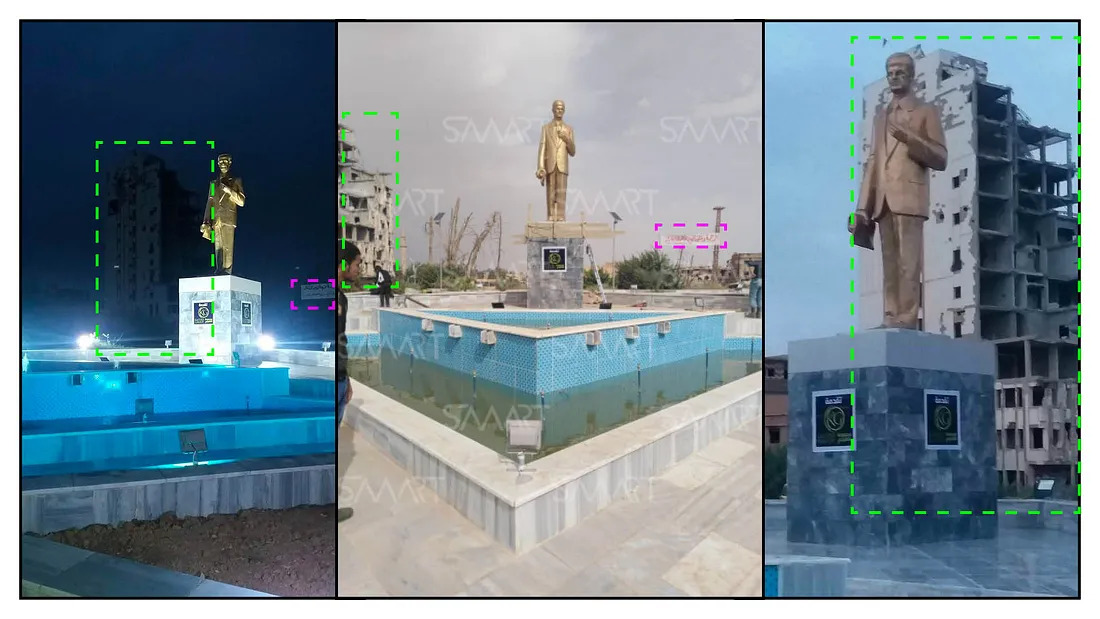
According to the Twitter accounts, the statue was reinstalled as part of the restoration of a traffic circle. Media outlets reported that, upon completion, a ministerial delegation attended the statue’s reinstallation ceremony. The Assad regime renamed the square with the reinstalled statue as “President’s Square.”
Verification by Geolocation
The newly surfaced photos were verified via geolocation in order to determine their authenticity.
As the town of Deir ez-Zor is rather small, possible locations of the reconstructed traffic circle were limited. The tall building in the background visible in all of the photos suggested that the statue was in the central area of town.
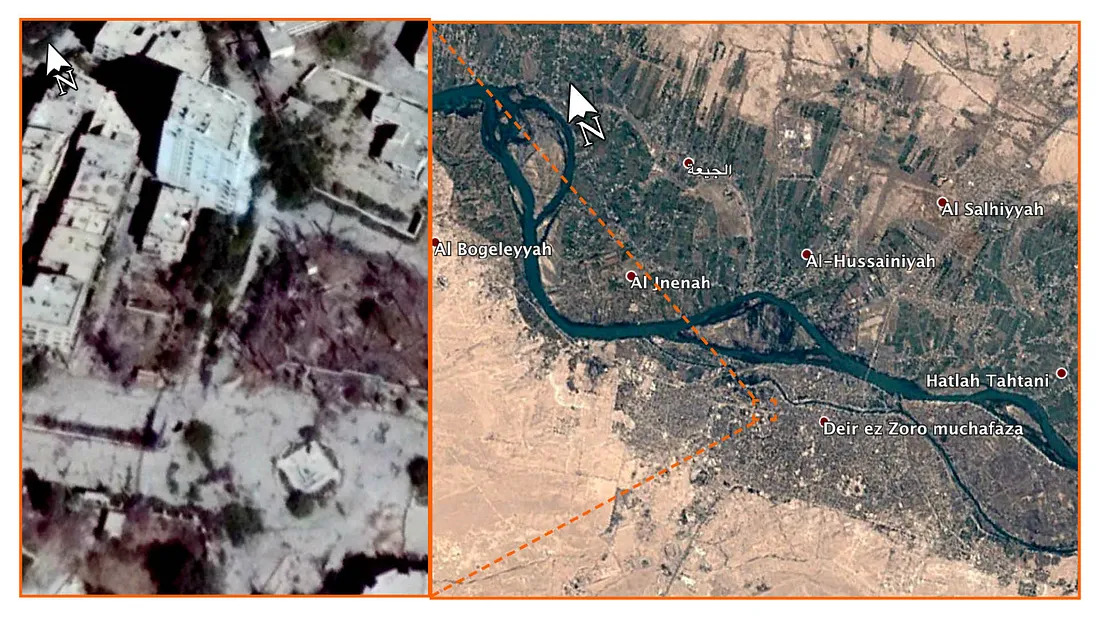
The sharp rectangular edges of the statue’s foundation were easily recognizable in satellite imagery. High resolution Google Maps satellite imagery allowed for the verification of the location of the statue with high certainty.

The most up-to-date Google Maps satellite image currently available was taken on October 10, 2017, and displayed the foundation without the actual statue. Planet satellite imagery taken on November 2, 2018, suggested the approximate time when the statue was erected.
As Twitter users argued, the statue was likely a part of the traffic circle reconstruction project. Although the resolution of the daily imagery was not high enough to see when the statue was reinstalled, the fresh new asphalt around the foundation was clearly visible due to its darker color.
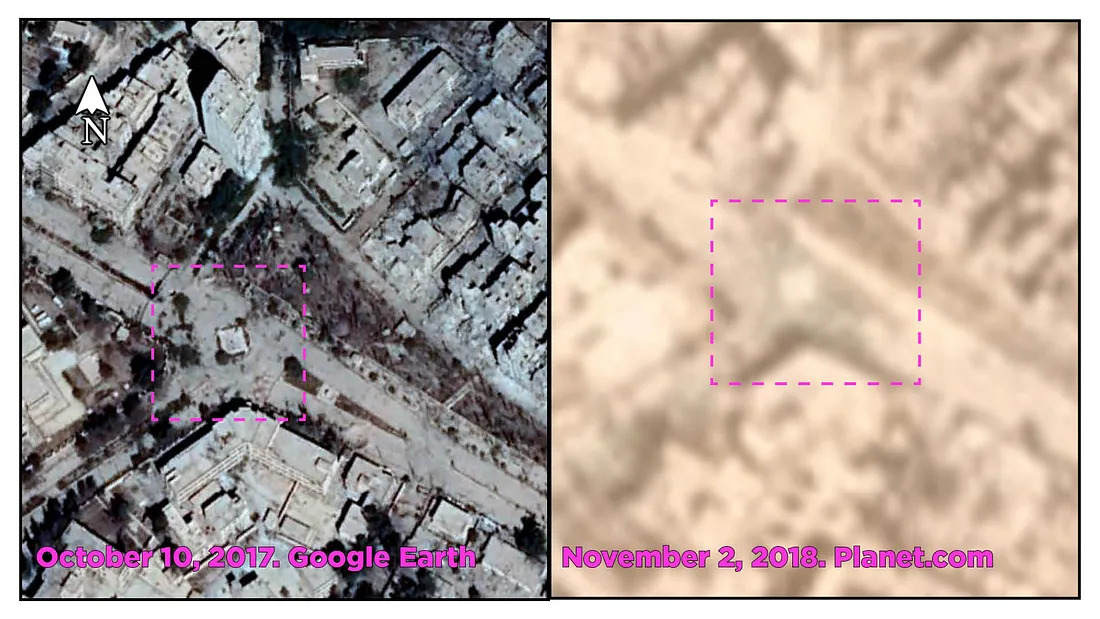
satellite imagery. (Source, left: GoogleMaps; Source, right: Planet.com)
By analyzing daily satellite imagery, @DFRLab was able to determine the time of the reconstruction. The available satellite imagery from October suggested that the reconstruction took place between October 5 and October 10.
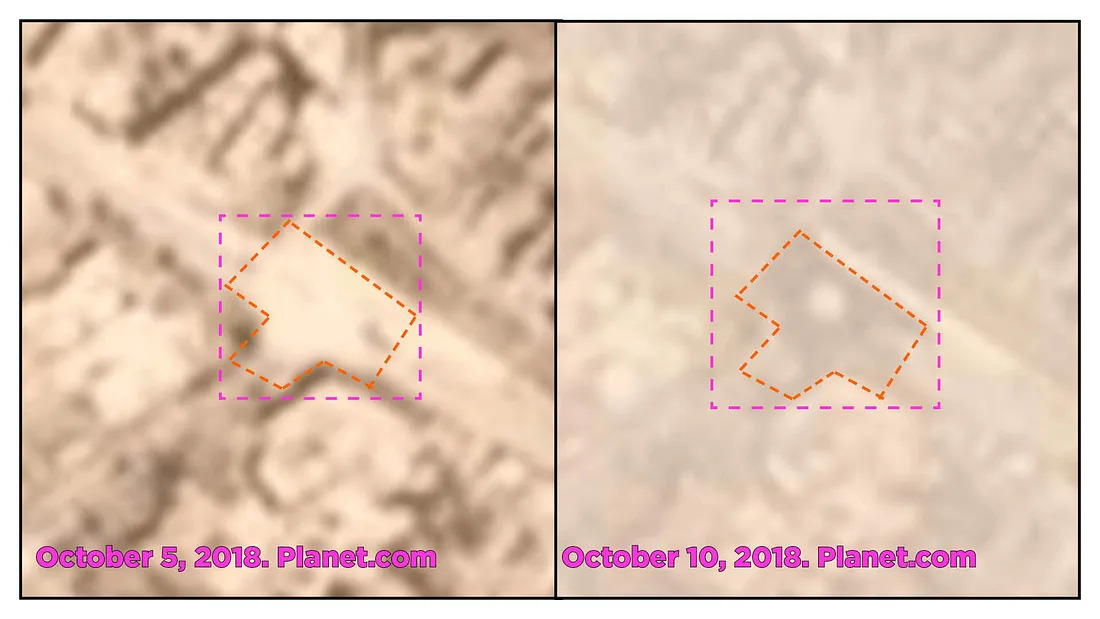
The Syrian Observer reported on June 4, 2018, about the Assad government’s plans to allocate six billion Syrian Pounds (approximately $11.6 million USD) to reconstruct Deir ez-Zor. These efforts were widely criticized by activists and observers as grossly insufficient for the war-ravaged town. According to the Syrian Observer story, Iran and Russia were bidding on reconstruction contracts in the region, including repairing and upgrading Syrian energy facilities. No other significant government reconstruction efforts have been reported since October 2018.
Conclusion
Recently surfaced photos of Hafez Al-Assad’s statue being reinstalled in Deir ez-Zor appear to be genuine. After Bashar al-Assad’s government promised to allocate six billion pounds in reconstruction in Deir ez-Zor in June, the statue was one of the first reported projects in the town.
The newly reinstalled statue gives a better perspective on the Assad regime’s priorities. Residents of Deir ez-Zor have struggled to acquire basic building material and to secure clean water supplies since the town was recaptured from ISIS. While most of the country is still in ruins, the ruling elite focuses on reinstalling symbols of power rather than critical infrastructure.
@DFRLab will continue to monitor significant military operation and developments in Syria.
Follow along for more in-depth analysis from our #DigitalSherlocks.

